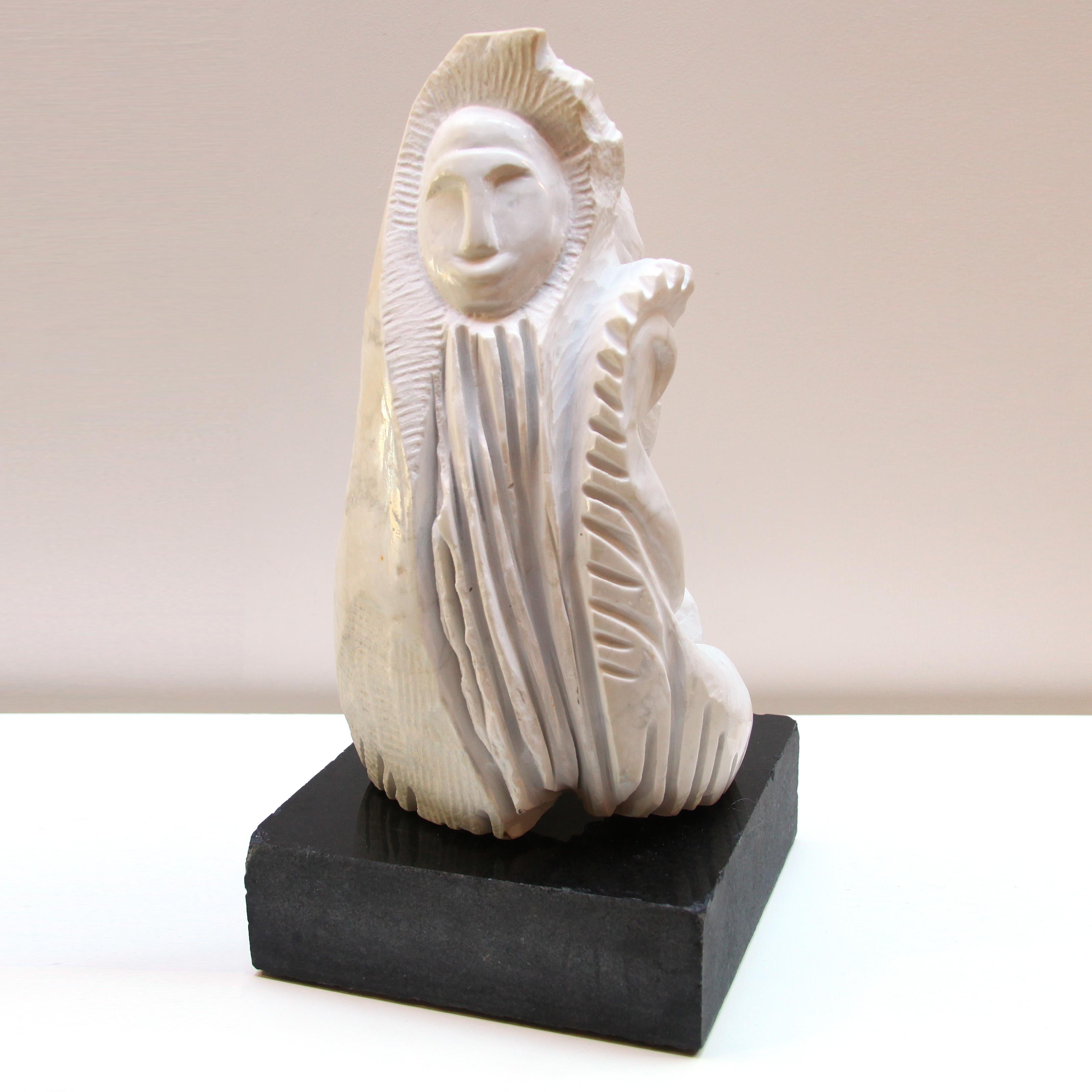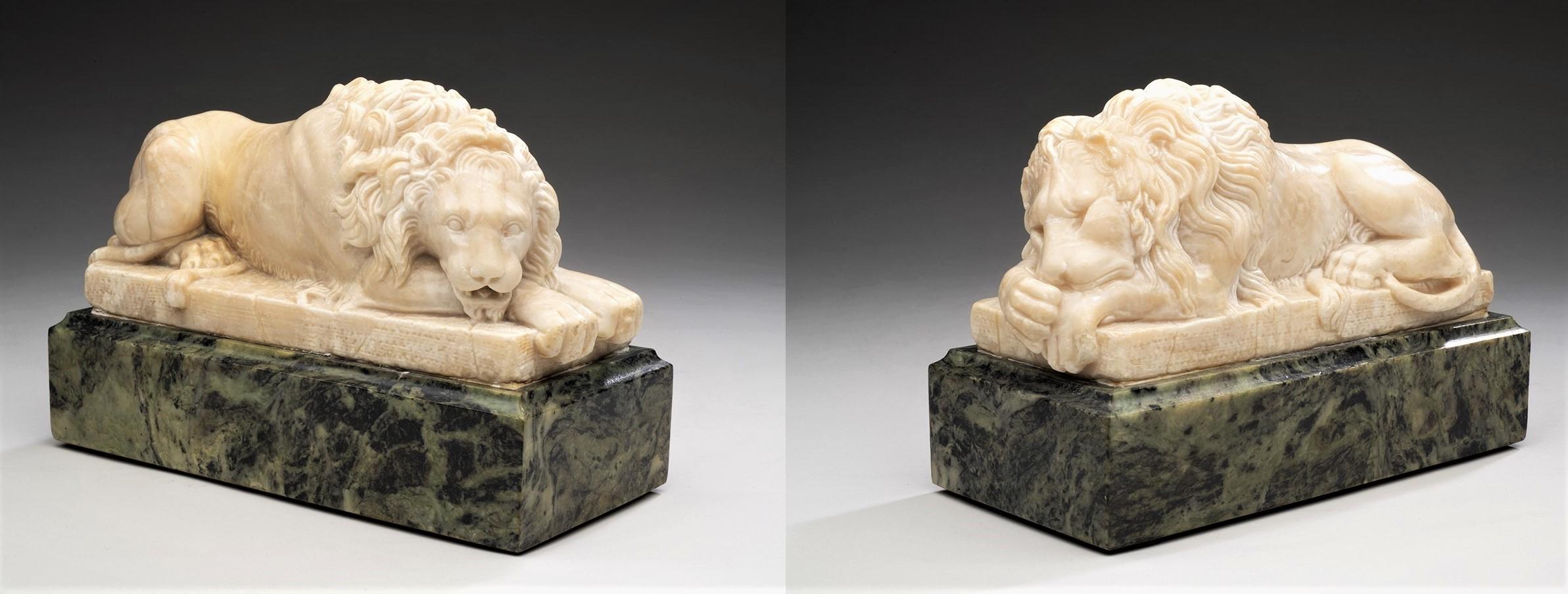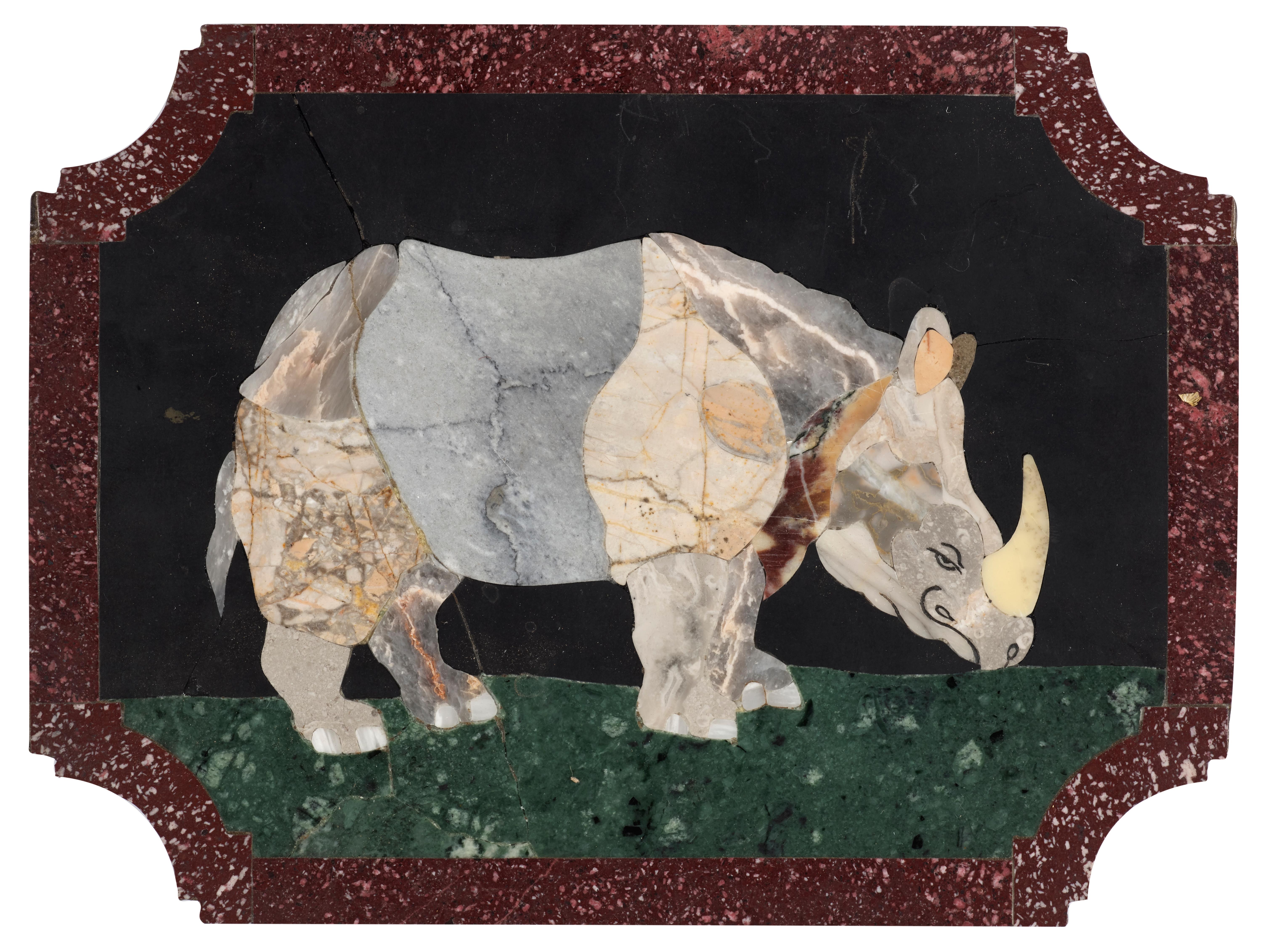Items Similar to Antique Italian Grand Tour Bronze Marble Bust Sculpture Dante Alighieri 1880
Want more images or videos?
Request additional images or videos from the seller
1 of 15
UnknownAntique Italian Grand Tour Bronze Marble Bust Sculpture Dante Alighieri 1880Circa 1880
Circa 1880
About the Item
A good antique Italian Grand Tour Bronze and marble bust of Dante Alighieri, circa 1880.
The bronze is most likely Florentine and modelled as the 13th century Italian Poet, writer and philosopher Dante Alighieri (1265-1321), the writer of one of literatures most important works, "The Divine Comedy". The bronze was created by the lost wax method and sits on the original and substantial variegated marble plinth. Condition is very good.
Mounted: 16" tall x 19" wide x 8.5" deep - 50.5lbs total
The bronze bust alone (not mounted): 12.5" tall x 17" wide x 7.5" deep - 15lbs
- Creation Year:Circa 1880
- Dimensions:Height: 16 in (40.64 cm)Width: 19 in (48.26 cm)Depth: 9 in (22.86 cm)
- Medium:
- Movement & Style:
- Period:
- Condition:Condition is very good.
- Gallery Location:Portland, OR
- Reference Number:
About the Seller
4.3
Gold Seller
These expertly vetted sellers are highly rated and consistently exceed customer expectations.
Established in 1990
1stDibs seller since 2020
23 sales on 1stDibs
- ShippingRetrieving quote...Ships From: Portland, OR
- Return PolicyA return for this item may be initiated within 14 days of delivery.
More From This SellerView All
- Antique French Grand Tour Gilt Bronze Statue on Column Diana the Huntress 1838By Ferdinand BarbedienneLocated in Portland, ORA fine & large (34" tall) antique French gilt-bronze on marble column of Diana, cast by Ferdinand Barbedienne (1810-1892) after a statue by Jean Antoine Houdon (1741-1828), the bronz...Category
1830s French School Figurative Sculptures
MaterialsMarble, Bronze
- Antique Spanish Art Nouveau Bronze Neo-Classical Sculpture Statue Bacchante 1890Located in Portland, ORA very good antique Neo-Classical bronze of a Bacchante or Maenad, by Spanish sculptor Gustave Obiols Delgado (1858-1902). The sculpture circa 1890. This large & very attractive, fin...Category
1890s Art Nouveau Figurative Sculptures
MaterialsMarble, Bronze
- Antique French Art deco Leaping Stag Bronze Statue Sculpture Bronze marble 1925By Georges H. LaurentLocated in Portland, ORA fine & large antique French Art Deco Bronze leaping stag sculpture/statue, by Georges H. Laurent (1880-1940), circa 1925. Georges H. Laurent was known for his animal subjects and t...Category
1920s Art Deco Figurative Sculptures
MaterialsBronze
- Antique French Gilt Bronze Marble Statue Sculpture of Fortuna Louis G FulconisLocated in Portland, ORA very good large antique French gilt bronze of the Roman goddess Fortuna, by Louis Guillaume Fulconis (1818-1873), circa 1860. The bronze is inspired by sculpture of the Italian Ren...Category
1860s Renaissance Figurative Sculptures
MaterialsBronze
- Antique Art Deco Bronze Sculpture Statue Female Nude Dancer Josef Lorenzl 1925Located in Portland, ORA very elegant antique Art Deco bronze sculpture, statue by Josef Lorenzl, Austria, 1925. This beautiful bronze sculpture portrays a beautiful young woman, she is modeled as a nude t...Category
1920s Art Deco Figurative Sculptures
MaterialsBronze
- Large Antique Vienna Bronze Orientalist Camel Rider Statue Sculpture Carl KaubaBy Carl KaubaLocated in Portland, ORA large cast Vienna bronze in the Orientalist style by the Austrian sculptor Carl Kauba (1865-1922). The bronze finely modeled as an Arabian dromedary camel...Category
Early 20th Century Art Deco Figurative Sculptures
MaterialsBronze
You May Also Like
- Figurative Marble Sculpture, "Kindred"By TONY GANGITANOLocated in San Diego, CAThis is a one of a kind Italian white Carerra marble sculpture by San Diego artist Tony Gangitano. Its dimensions are 10" x 25" x 10". It is on a black granite base. A certificate of authenticity will follow delivery. This sculpture is a representation of Mary and Christ...Category
2010s Italian School Figurative Sculptures
MaterialsGranite, Marble
- Diogenes of Sinope Large Bust in Marble 18th CenturyLocated in Pistoia, ITImpressive white Candoglia marble bust depicting the Greek philosopher Diogenes of Sinope. Northern Italy, first half of the 18th century. Diogenes of Sinope, called the Cynic, was ...Category
Early 18th Century Italian School Figurative Sculptures
MaterialsMarble
- Testa Neoclassica in Marmo dell' Afrodite di Cnidia circa 1830 Busto SculturaLocated in Pistoia, ITMagnifica scultura neoclassica in marmo bianco di Carrara, raffigurante la testa a mezzo busto dell' Afrodite di Cnidia. Italia, inizi del XIX secolo verso il 1830. Esistono numerosi...Category
Early 19th Century Italian School Figurative Sculptures
MaterialsMarble
- Pair of Italian "Alabaster Stone Lions" after Antonio Canova; Mid 19th CenturyLocated in SANTA FE, NM"Pair Recumbent Stone Lions" after Antonio Canova (1757-1822) Italian (possibly Florence) Mid 19th Century Alabaster, marble 6 x 9 x 4 inches This is an exquisite pair of Italian alabaster lions on marble bases based on the monumental lions carved by Antonio Canova (1757-1822), the greatest Italian neoclassical sculptor. Canova sculpted the marble lions for the monumental tomb of Pope Clement XIII in St. Peter’s, Rome in 1792 Canova Lions refers to the pair of copies of lion sculptures by Antonio Canova. When Canova created the sculptures in 1792, he installed them on the tomb of Pope Clement XIII. The marble sculptures are some of the most prominent features in St. Peter's Basilica in Rome. Given the intricacies of creating the original Canova lions, some artists created molds and replicated them. A good example is the pair of lion sculptures...Category
1850s Italian School Figurative Sculptures
MaterialsAlabaster, Marble
- A set of four hard stone marquetry plaques depicting animals, Italy 18th centuryBy Antonio TempestaLocated in PARIS, FRThese four plaques represent either domestic (a horse, two rams) or exotic animals (a rhinoceros and an elephant). Made on slate slabs cut to shape (a rectangle with concave angles), they are all based on the same narrative scheme: in a frame of Egyptian porphyry, an animal in multicoloured marble is represented advancing on a green marble floor, standing out against a black slate background. These plates were made in Italy, probably in Florence or in Rome, during the 18th century. We think that their primary purpose was to decorate the drawers of a cabinet. Like many other compositions in hard stone, these plaques were inspired by engravings that were a widespread decorative repertoire in the workshops. Three of the plaques presented here were directly inspired by works by Antonio Tempesta (1555 - 1630): the Rhinoceros, the Polish Horse...Category
18th Century Italian School Figurative Sculptures
MaterialsMarble, Slate
- The PhilosopherBy Vincenzo GemitoLocated in PARIS, FRThe Philosopher by Vincenzo Gemito (1852-1929) Bust in bronze with a nuanced dark brown patina Signed "Gemito" Stamped with the foundry mark "Fonderia Gemito Napoli - Merca di Fabbr...Category
Early 20th Century Italian School Figurative Sculptures
MaterialsBronze
Recently Viewed
View AllMore Ways To Browse
Antique Italy Sculpture
Antique Bust Sculpture
Antique Italian Sculpture
Antique Marble Sculpture Art Sculptures
Antique Italian Marble Sculptures
Marble Sculpture Antique
Figurative And Bust Sculptures
Italian Antique Bronze Sculpture
Original Antique Bronze Sculpture Art Sculptures
16century Sculpture
Tall Gold Sculpture
Grand Tour Bronze
The Grand Tour Sculpture
19th Century Italian Bronze Sculpture
Grand Tour Bronze Antique
Marble Sculpture Plinth
19 Century Antique Sculpture
17 Century Sculpture Bronze


